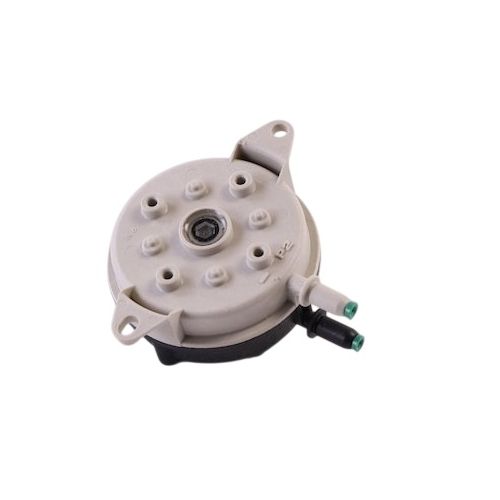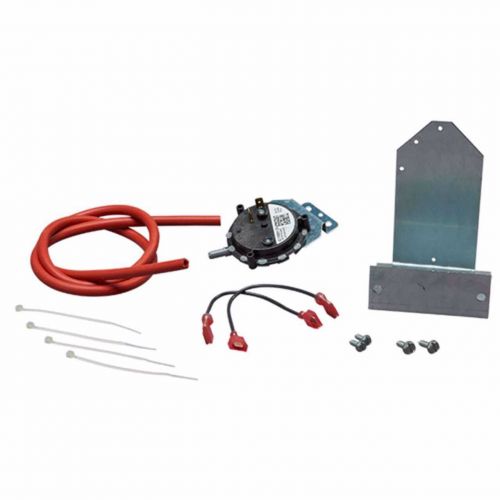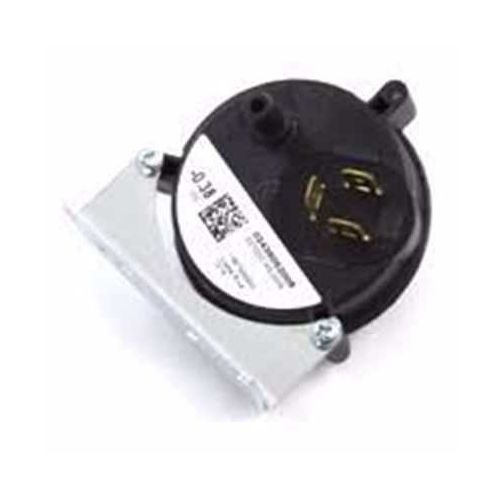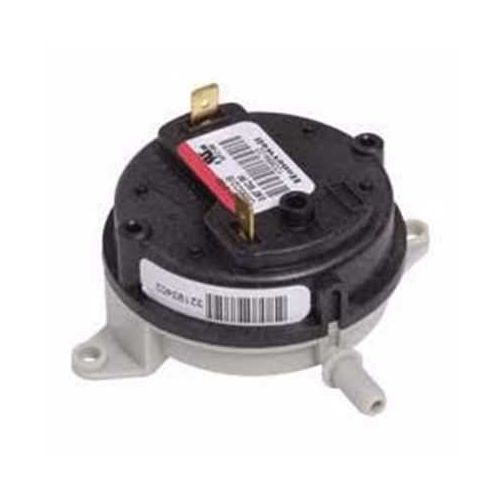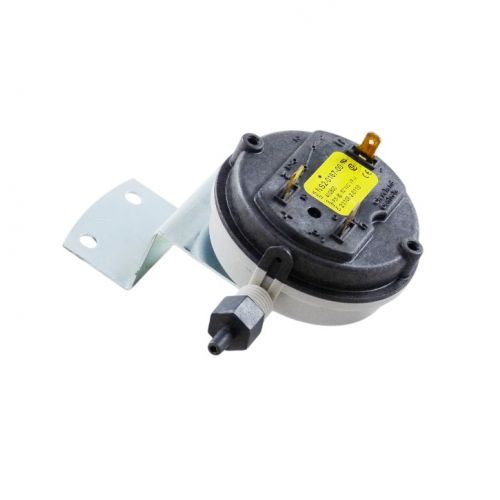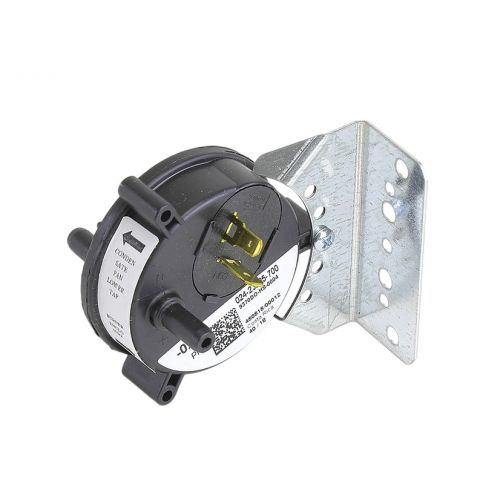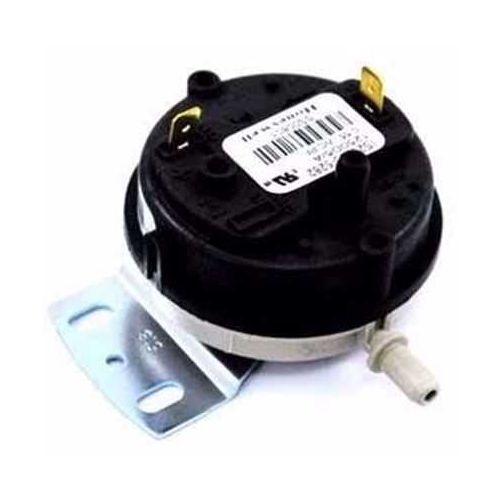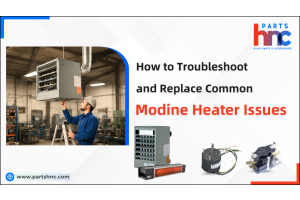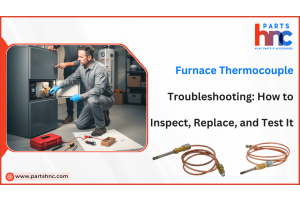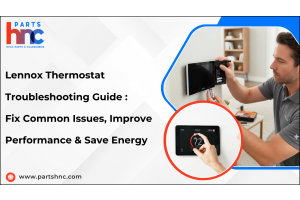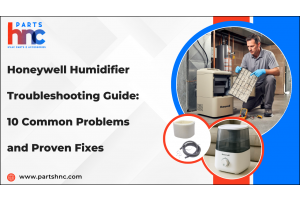HVAC Pressure Switch - Explanation, Varieties, and Problem Solving

What is a pressure switch? Pressure Switches play an important role in your HVAC Systems. A pressure switch regulates when pumps are activated and deactivated based on pressure thresholds. To maintain constant pneumatic or mechanical pressure, they are also utilized in process control systems. Understanding HVAC pressure switches, their types, and their applications are helpful when selecting a system.
Among the most well-known manufacturers of pressure switches for furnaces, air conditioners, heat pumps, and other appliances are Lennox, Rheem, and Amana Goodman.
Table Of Contents:
What is a pressure switch?
Most of them does know what is a pressure switch? A pressure switch is a basic electromechanical component that uses pressure to either turn on or off an electrical circuit. The switch's set point and cut-out point are the pressure thresholds that activate and deactivate the switch, respectively.
The following essential elements make up a pressure switch:
- A diaphragm that serves as the pressure detection component. Typically, it is constructed of a malleable, pressure-sensitive substance.
- An adjustment spring to change the settings or cut out points. For controlling the set and cut-out points, certain switches have separate springs.
- An AUTO/OFF lever that can be used to manually turn the switch on or off. When performing installation or maintenance, this lever is helpful for disabling the switch. The idea is the same, even if the lever is occasionally replaced by a knob.
- Electrical connections that, when they come into contact, permit the flow of current from an external power source.
- Terminals to connect the contacts to an external power supply.
Top Selling Products
Pressure switch types you need to know
Pressure switches come in two primary varieties: mechanical and electronic pressure switches. Electronic pressure switches are solid-state switches that do not need to be activated by a pressure-sensing component. They function covertly by utilizing other characteristics like capacitance and resistance. Depending on the design and construction of the pressure-sensing component, mechanical pressure switches are further subdivided.
Below are three pressure switch types that you need to know, apart from mechanical and electronic ones.
Low pressure switch
Low pressure switches are made to react to minimal or slight changes in pressure. They serve as a safeguard against pressure loss in a line that could injure or damage a system. Low pressure switches will shut down machinery, sound an alarm, or provide a pressure reading if there is no flow or pressure in a line.
Low pressure switches have a variety of operational mechanisms, such as pistons, piezoelectric crystals, and diaphragms. They have an unusual sensitivity that enables them to respond to changes in system pressure.
Differential low pressure switches operate by determining the difference in pressure between two places and acting in line with their preset point. When the positive pressure changes, positive low pressure switches respond by translating the positive pressure signal into an electrical output. Negative low pressure switches, on the other hand, turn negative pressure signals into electrical output when the negative pressure changes.
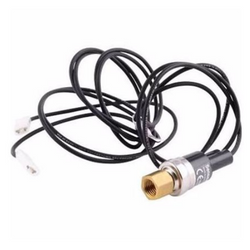
High pressure switch
High pressure switches have pressure limitations that are high pressure-proof. They can be moved by pistons, piezoelectric crystals, or diaphragms.
High pressure switches continue to operate and maintain pressure control even if the majority of pressure switches will malfunction under specific circumstances. High pressure switches are employed as waterproof and explosion-proof pressure switches in high pressure situations due to their capacity to provide continuous pressure control.
Aluminum, stainless steel, Monel, Hastelloy, or steel are the materials used to make high pressure switches, which also have strong tensile and durability strengths. Some high pressure switches are corrosion-resistant depending on the type of alloyed metal used.
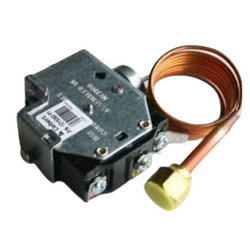
HVAC pressure switch
Both heating and cooling systems have protective devices called HVAC pressure switches. Under certain circumstances, the switch will open and halt the system from working, which could be harmful to it. Clogged vents or hoses, filthy filters, or dirty condenser coils are some situations that frequently trip pressure switches. The specific type of HVAC pressure switch and HVAC components you'll need will depend on the application for which they'll be used.
There are various HVAC pressure switches. Your HVAC system's design and quantity of pressure switches will vary depending on whether it uses traditional or condensing technology. HVAC washers and pressure switches come in a variety of designs that can be used to provide your system with the right efficiency and dependability.
As discussed previously, pressure switches can be found in furnaces, heat pumps, air conditioners, etc. Let's take a look at how a pressure switch functions in different HVAC systems.

How does a furnace pressure switch work?
There are numerous parts in your furnace that play a vital part in ensuring both safety and excellent performance. A Furnace pressure switch is an example of such a device.
A furnace pressure switch is a built-in safety device that is situated close to the motor. If it detects the negative pressure produced by the draught inducer motor, it turns off the furnace. This safeguards your house against hazardous back drafting, which occurs when exhaust gasses are reintroduced into the system. The pressure switch also protects against gas leaks and stops the furnace from cycling in the event of a mechanical failure.
Where is the pressure switch on a furnace?
Pressure switch furnace plays an important role. In a furnace, a safety device called a furnace pressure switch is situated next to the motor. Once you have taken off the front cover of your furnace, you should be able to easily identify the round-shaped switch.
How to test the furnace pressure switch?
Your furnace may not be working properly if the pressure switch is damaged. Here's How to test the furnace pressure switch whether it has tripped or failed:
- Put an ohmmeter lead on the terminals of the pressure switches. It should read 0 or very close to zero. A high value indicates a failed pressure switch.
- An alternative approach is to use a voltmeter to measure the voltage between each terminal and the ground. The voltage should range from 24 to 28 volts DC.
- Look for a damaged or blocked hose that connects the pressure switch to the draught inducer motor or condensate collector box. These issues may result in the switch tripping or failing.
What happens when a furnace pressure switch goes bad?
Replace the broken component if you find that the furnace pressure switch goes bad. One of the most frequent causes of furnace problems is a bad switch or a tripped switch. Many factors, such as the following, might cause pressure switches to malfunction:
- As the years advance, inaccurate measurements and improper oven cycling may occur
- Coated or stiffening pressure switch diaphragm
- Damage to the diaphragm due to holes, tears, or other defects
- Jamming of switches due to dust or grime accumulation
Replacement of a furnace pressure switch is easy when you follow the steps below:
- Flip the switch on the furnace's power breaker to turn it off.
- Uncover the combustion chamber by removing it which is usually located on the top half of the unit.
- Disconnect the group of wires that are attached to the pressure switch's front.
- Remove one or more vacuum tubes from the side of the appliance.
- Lift the pressure switch out of the draught inducer motor by removing the screws holding it in place.
- A new switch is mounted to the motor by sliding it on and tightening it.
- To the new pressure switch, reattach the wires and vacuum tubes.
- After replacing the combustion chamber panel and turning the breaker back on, adjust the thermostat such that it requests heat. The furnace should run smoothly if everything goes as planned.
What is the purpose of an AC pressure switch?
The AC pressure switch, which is positioned on both the high and low sides of the ac system, functions as a safety switch. The system is checked for pressure flaws that could harm the compressor using both the high-side and low-side pressure switches.
When the pressure is too low, the compressor is at risk of being harmed. It could cause the compressor to overheat and become damaged if it is too high. Depending on which side of the system the sensor is located on, the switch will turn off the compressor if the pressure rises or falls excessively in order to prevent damage.
Different types of AC pressure Switches
In order to understand how AC pressure switches work, you should know there are two kinds: AC high pressure switches and AC low pressure switches.
AC high pressure switch
High pressure switches stop compressor circuits if pressure exceeds their ratings. Air conditioners and heat pumps will have different ratings based on the type of refrigerant they use.
Some heat pumps and air conditioners have a switch that needs to be manually reset. In other words, if it trips, there is definitely a problem that needs to be addressed before the system is restored.
For instance, the reset button is typically found close to the control panel on Lennox heat pumps and air conditioners. Until the pressure reaches the switch rating, just press the switch to reset it, and the air conditioner should resume regular performance.
A high-voltage switch may trip for the following reasons:
- The motor for the condenser fan is broken.
- Dirt and debris have obstructed the condenser coil.
- The coil's fins have been bent.
- The cooling system has a blockage.
Before resetting the switch, any issues that may be present should be fixed. The system can't run at very high pressures because of a high pressure switch. Without taking into account the issue, repeatedly resetting the switch could result in a catastrophic breakdown of the system, costing more to fix.
AC low pressure switch
The AC low pressure switch typically functions as an automatic reset switch that automatically resets when the pressure there rises to the switch's preset level or back to normal.
When the HVAC system is working at a lower pressure than usual, the system may freeze at the evaporator coil at the start of the coolant and then return to the compressor via the suction line. Clogging of the liquid refrigerant in the compressor due to refrigeration system freezing is bad and might result in compressor failure.
A low voltage switch may trip for a variety of reasons, including:
- Low refrigerant charge is caused by refrigerant leakage.
- The air handler's blower motor is broken.
- An obstructed airflow or blocked evaporator coil.
- The refrigeration system's components malfunction.
Where is the AC pressure switch located?
As we know AC pressure switch, prevents damage to the compressor from pressure problems that could result from high or low pressure. But where is the AC pressure switch located?
On the unit's high and low sides, you can find your AC pressure switches. With separate switches for the high side and the low side of the system, these switches continuously check and monitor the refrigerant pressure on both sides of the system.
How to troubleshoot pressure switch in your HVAC system
Pressure switches are a crucial part of HVAC systems to ensure that the system is running smoothly. If you happen to notice a pressure switch not working, here’s what you should do:
- Make sure the switch is clean and dry.
- Check that the switch is not broken or damaged.
- Check the wiring of the switch.
- Check for any obstructions in the area around it.
- Replace it if necessary.
At PartsHnC, you can find all your HVAC parts and accessories in one place. Our HVAC parts, such as pressure switches, thermostats, coils, and more, are 100% reliable and cost-effective. We also provide brand name parts such as Hubbell, Trane, Carrier, and York. Our parts come from the best manufacturers in the industry, so you can be confident that your HVAC equipment is top of the line.


